There’s good news about amphibians, and it’s an important antidote for hopelessness.
The main character of Mark Twain’s first literary success, The Celebrated Jumping Frog of Calaveras County, was a California red-legged frog whose noted leaping ability was annulled by birdshot surreptitiously forced down its throat.
When The New York Saturday Press ran the story on November 18, 1865 California red-legged frogs were so abundant in and near the state’s coastal areas they provided a booming market for frog legs.
Today the West’s largest native frog is missing from 70 percent of its historic range and listed as federally threatened. Likely causes include an alien amphibian disease called chytrid fungus, development, urban runoff, water loss from diversions, drought and fire from climate change, past predation by humans and current predation by non-native fauna.
But recovery efforts by multiple partners, including The Nature Conservancy, are producing spectacular results.
For example, for the first time in almost a century red-legged frogs are back in the Santa Monica Mountains National Recreation Area in and around Los Angeles.
It seemed impossible that there could be any viable frog habitat left in this urban park. The watershed collects runoff spiked with oil, heavy metals, pesticides and fertilizers. Many creeks have been channelized. Alien frog predators like mosquito fish (stocked for mosquito control), bass and sunfish (stocked for sport) and red swamp crayfish (released as bait) abound. Water is diverted legally by municipalities and illegally by marijuana farmers.
But after exhaustive work, National Park Service wildlife ecologist Dr. Katy Delaney and her team, found four streams that looked right. Beginning in 2014 they harvested eggs from a population in the nearby Simi Hills, taking only partial masses in order to ensure as many donors as possible and maximize genetic diversity. Then they raised and released tadpoles.
In March 2017 Delaney’s volunteer assistants brought her a photo of what they claimed was a “problem.” Actually, the photo showed new egg masses floating on one of the Recreation Area’s reintroduction sites — proof that the frogs were reproducing. “A cruel trick,” Delaney told me, laughing.
She reacted to the photo with copious tears of joy.
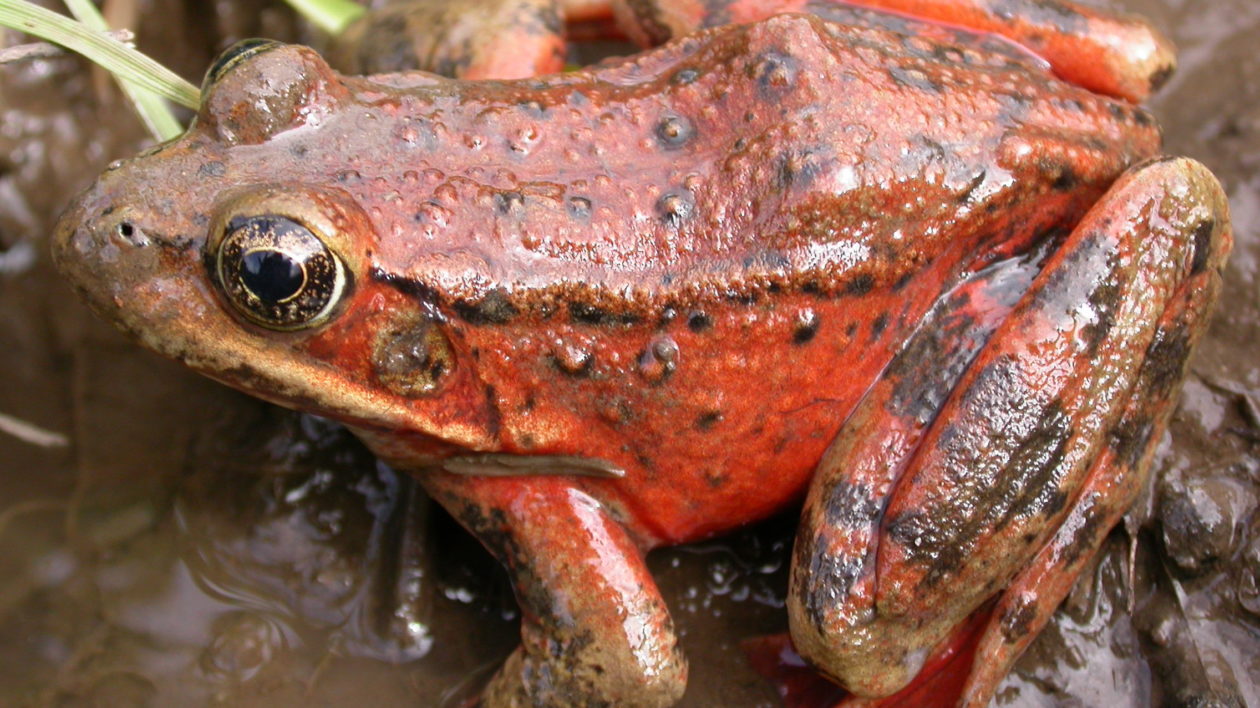
Of Frogs and Fire
But in November 2018 Delaney was shedding tears of grief. The Woolsey fire, the most destructive blaze in California’s modern history, had burned 96,949 acres including 88 percent of the Recreation Area.
“I was on vacation so I had a little bit of a delayed reaction,” she recalls. “Then I saw these once-beautiful, lush canyons where I’d heard birds singing and frogs hopping into water. They were black, brown and muddy, no more water except for trickles.”
Heavy rain followed, choking recovery sites with ash and debris. “I don’t even know if [the frogs] are alive,” Delaney told National Parks Traveler.
Now, to her delight, frogs are thriving at the donor site, which also burned but didn’t have the sedimentation issues of the four translocation streams. And frogs are doing better in those streams than anyone had dreamed possible.
“We did night surveys this past September, and we found adult frogs in every one of our recovery sites,” Delaney reports. “There were about half the numbers we’d seen before the fire, but what was really encouraging is that we don’t have to start over. There’s a good ratio of males and females, so if habitat recovers in the next several years those frogs should be able to survive and breed.”
Still, she’s worried. Red-legged frogs live only eight to ten years, and the oldest ones are already five. If there’s another drought they might not make it. What’s more, offspring won’t reach breeding age until they’re three.
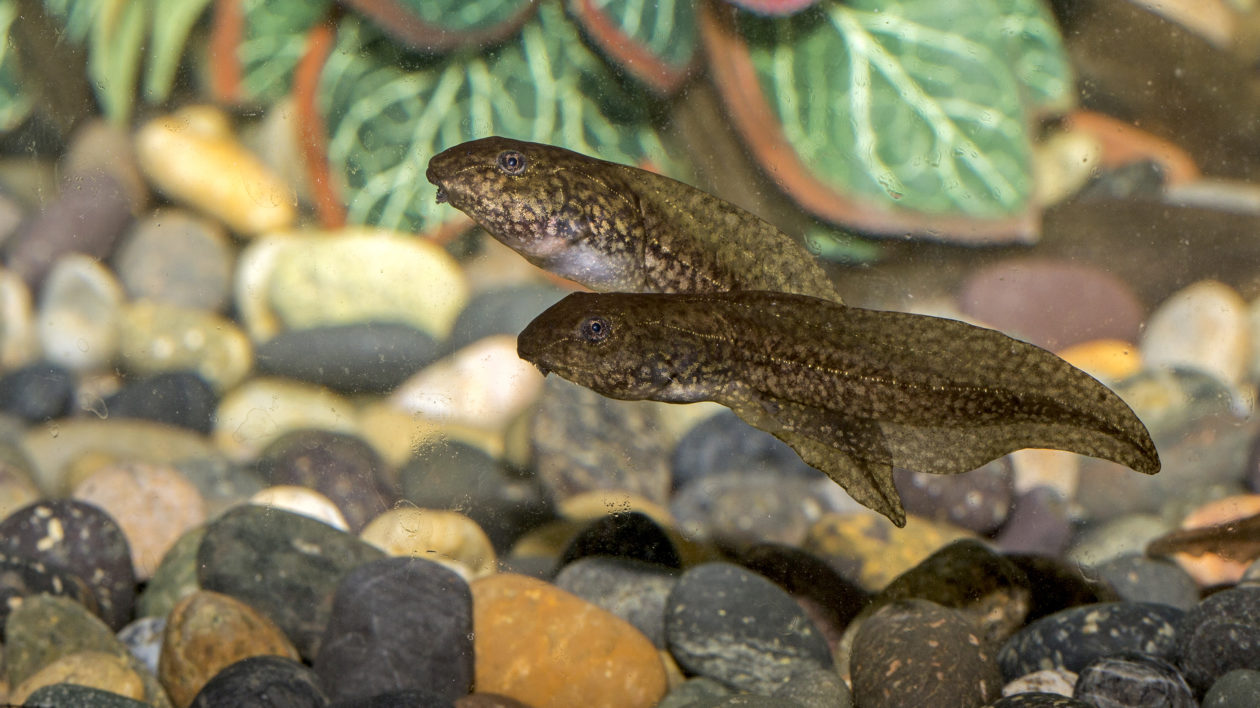
The frogs evolved with fire and obviously have adapted to it. “But natural fires don’t happen here anymore,” says Delaney. “They’re ten times more frequent, and now they’re all human caused. Climate change makes them worse.”
Another worry is alien predators, especially red swamp crayfish native to south central United States and northeastern Mexico. They gorge on anything they can get their claws on including adult frogs, tadpoles and eggs. They’re considered a delicacy in their natural range, but in the Recreation Area urban runoff makes them unfit for human consumption.
Streams dried out periodically before development transformed the watershed. The frogs adapted, hunkering in puddles and muddy depressions. But today urban runoff, polluted though it is, provides alien predators with perennial water.
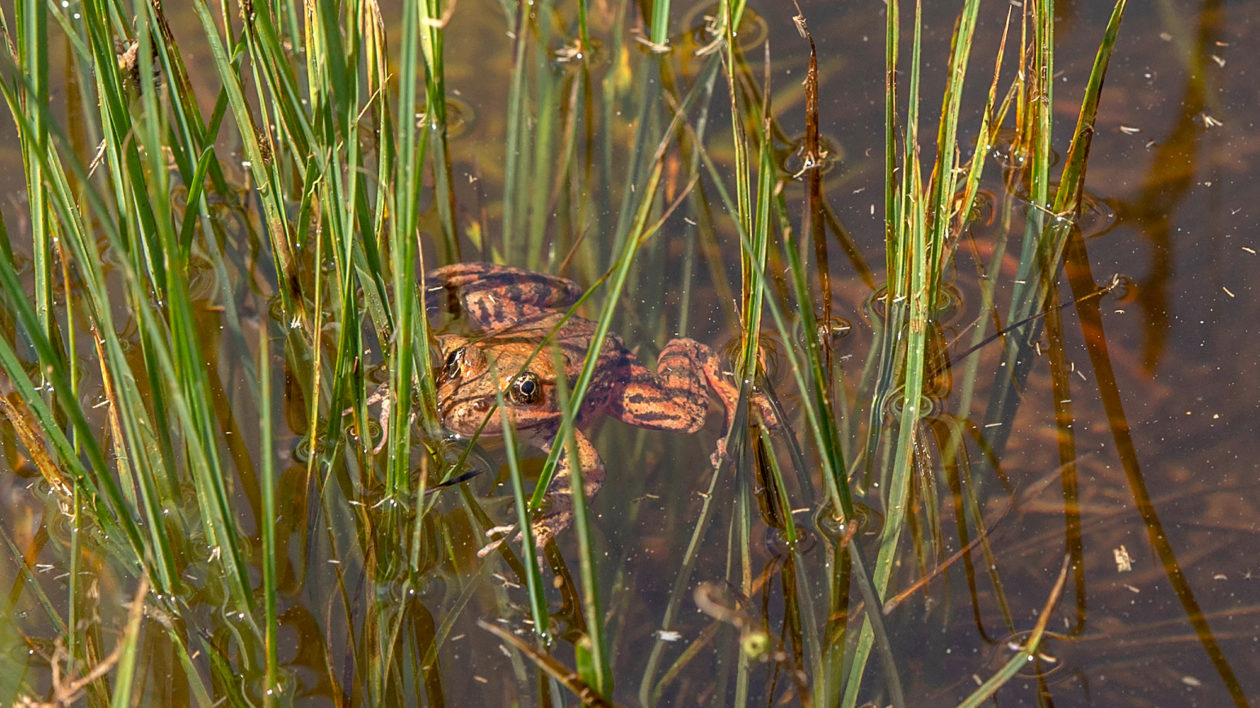
Plumbing for Amphibians
I caught up by cell phone with the U.S. Geological Survey’s Dr. Robert Fisher on November 4, 2019, as he was driving to the 8,500-acre Santa Rosa Plateau Ecological Reserve, most of it purchased by The Nature Conservancy and then transferred to the California Department of Fish and Wildlife and Riverside County.
His mission: to inspect three new ponds the Conservancy has created for red-legged frogs and western pond turtles. He liked what he saw.
One of the main threats to the frogs is drought. So the Conservancy, which still manages the Reserve’s natural resources, has plumbed the ponds in order to add water when required.
In 2001 the Reserve’s red-legged frogs flickered out, victimized by bullfrogs, drought and off-site development that may have eliminated a major source population. But the Conservancy has eradicated the bullfrogs, and the watershed is intact. Now the scene is set for red-legged frog reintroduction in 2020.
“From 2011 to 2017 we had an extensive drought,” declares the Conservancy’s Zack Principe. “About the same time red-legged frogs were extirpated, western pond turtles started to decline. So we decided to build these ponds for drought refugia. Luckily, 2018 was a very wet year. We were able to turn off municipal water, which is expensive. We’ll put in a well, and that should pay for itself in six years.”
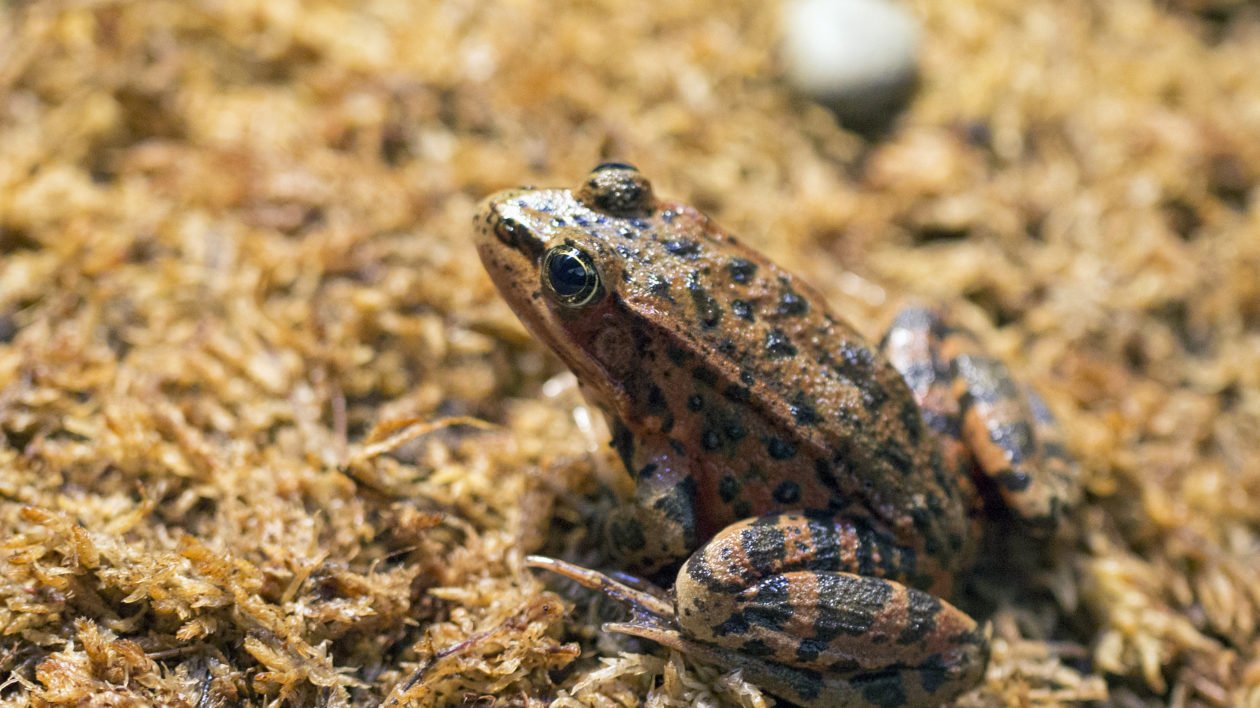
The Conservancy’s Susan North adds this: “We’ll place eggs in cages to protect them from predators until they hatch. The new ponds are only about a hundred feet from a creek with nice, natural pools; so frogs and turtles can move back and forth as needed for water.
“I think there’s a lot of opportunity for red-legged frogs here. The Conservancy purchased most of the Reserve for its unique suite of habitat types, including riparian habitat where the red-legged frogs thrived historically, and also for the oak woodlands, California native grasslands and vernal pools. We’re still buying land in adjacent areas to protect an important linkage between the Reserve and the Cleveland National Forest.”
Donor eggs for red-legged frog recovery at the Reserve will come from Baja California. “We’ll be using the tools we developed with Katy Delaney in the Santa Monicas,” says USGS’s Fisher. “The frogs in Baja are most closely related to the ones that were on the Santa Rosa Plateau, not the ones Katy is working on. We’ll be partnering with Fauna del Noroeste [Wildlife of Norwest Mexico] to assess the best harvest site for egg masses.”
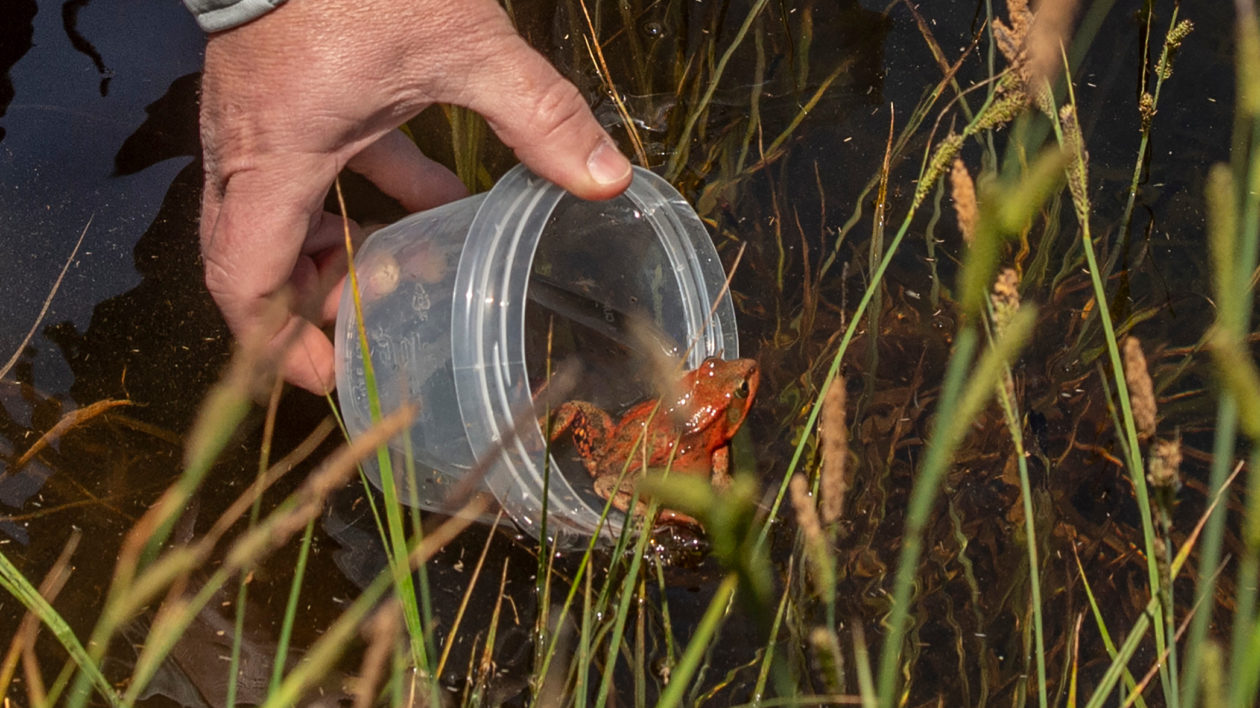
A Return to Yosemite
In 2019, for the first time in half a century, California red-legged frogs are breeding in Yosemite National Park.
Rob Grasso, the park’s aquatic ecologist, thinks chytrid fungus came in with bullfrogs illegally released in the 1950s, that the fungus eliminated most of the red-legged frogs before they could build any immunity, and that the bullfrogs finished them off.
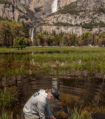
Native frogs surviving these blights were picked off by raccoons proliferating on open garbage dumps. But the park closed the dumps in 1970; and in 2005 it initiated bullfrog eradication via hand capture, spear, pellet gun, seine, hand net, and even hook and line.
In 2016, with most of the bullfrogs gone, the first red-legged frogs were reintroduced. They’d been reared by the San Francisco Zoo from eggs harvested from a privately owned site in the Sierra foothills. As with the Santa Monica project, only partial egg masses were taken to maximize genetic diversity. Funding the project was the Yosemite Conservancy.
“Our goal,” says the zoo’s Director of Conservation, Jessie Bushell, “was to create a self-sustaining population by rearing and releasing a thousand frogs over five years. We did it in three and a half years.”
Chytrid fungus is ubiquitous throughout current red-legged frog range, but there were lots of unknowns about possible effects on zoo-reared animals. Bushell and her team exposed about 100 frogs to the fungus, treated them and re-exposed them. After two years none appeared very sick.
“That was significant,” says Bushell. “It probably means they’ve developed an immune response, which is really cool. We were able to get animals in and out much quicker, and that saved the park lots of money.”
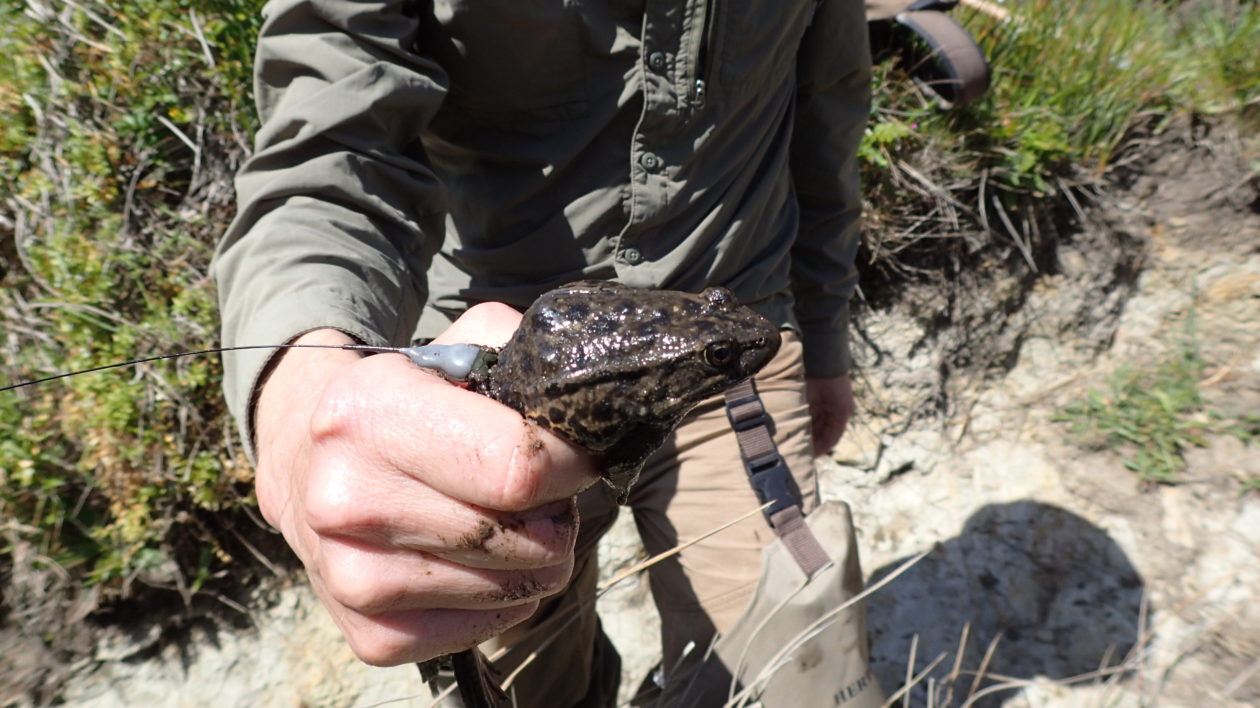
Hope is the Thing That Hops
Occupied red-legged frog habitat is more extensive and diverse than previously thought. For instance, at Point Reyes National Seashore a Park Service botanist discovered a red-legged frog during a dune-restoration project.
“When we did amphibian surveys we found that the frogs were widespread in the spring-fed, seasonal creeks between the dunes,” says USGS’s Dr. Brian Halstead. “Then we radio-tracked a bunch and learned they liked to hang out in the log jams — not typical log jams from washed-down trees but driftwood from the Pacific. The logs provide a cool, moist environment. We recommended that, in its dune restoration, the Park Service maintain the log jams and drainages.”
I couldn’t help telling Dr. Katy Delaney how inspired I am by scientists sufficiently invested in wildlife recovery to wax emotional over their successes. So far I haven’t wept, but I get emotional, too.
I appreciated her response: “When writers talk to me they say, ‘Wow you really care!’ I say, ‘You gotta care about something, and the California red-legged frog is such a cool, awesome thing to care about.’ I feel privileged when I get to do this as my job.”
“Me too,” I said.
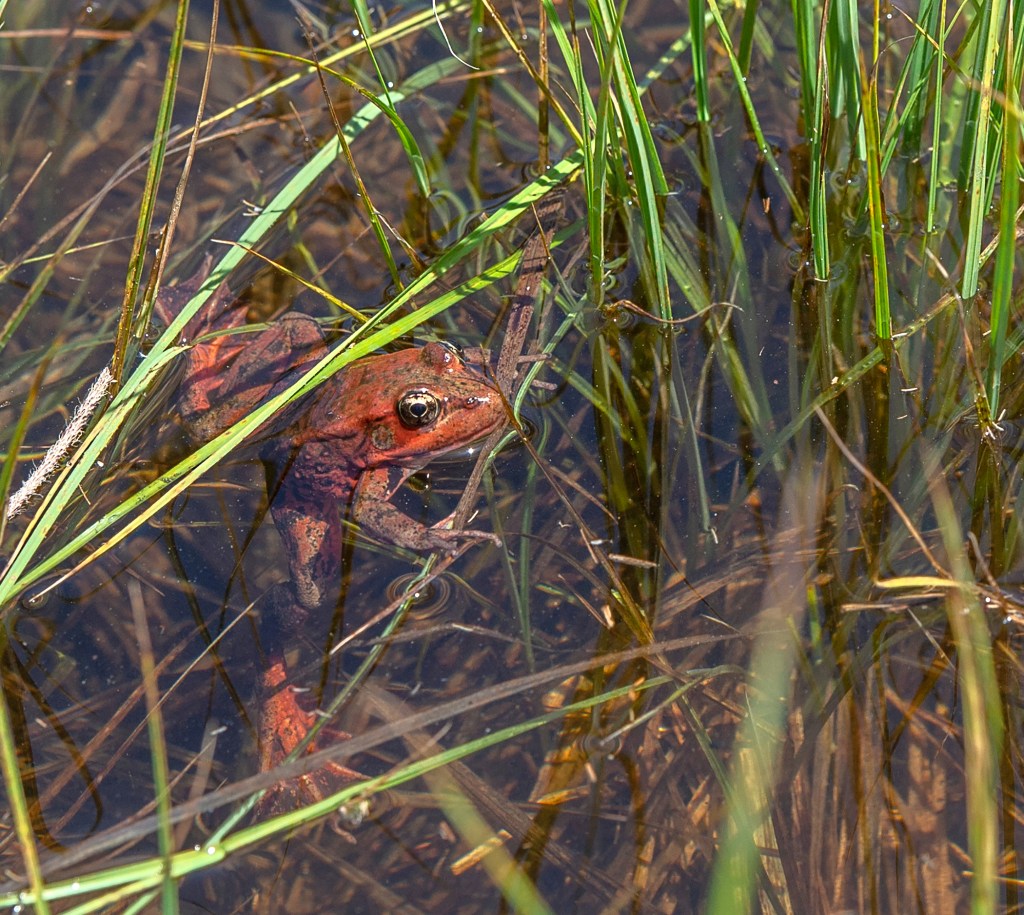



Mr. Williams,
Thanks for your amphibian activism.
Have you found a way to balance the former with a similar concern for Felis catus?
Just curious, and it seems your work could use the ‘net traffic these days. Glad to help.
Happy Holidays!
You may recall how I got crosswise with both National Audubon and the feral-cat support groups for doing an op-ed on the feral cat crisis that Audubon had asked me to write for no pay because it “didn’t have time.” Rather than dredging all that up, I’ll direct you to a feral-cat piece National Audubon assigned me to write for its magazine shortly before the op-ed flap: http://www.nwarkaudubon.org/PDFs/Fatal%20Felines%20by%20Ted%20Williams%20from%20Audubon%20September-October%202009.pdf
The topic isn’t right for my Cool Green Science “Recovery” column because feral cats aren’t being controlled (at least in the U.S.) and there’s been no resultant recovery. However, in the last five years I’ve queried major environmental magazines about addressing the subject. No editor wants to touch it.
Mr. Williams,
Thanks for the reply!
However, that’s not the article I had in mind. I was referring to the Orlando Sentinel article in which you stated:
“There are two effective, humane alternatives to the cat hell of TNR. One is Tylenol (the human pain medication) — a completely selective feral-cat poison. But the TNR lobby has blocked its registration for this use. The other is trap and euthanize.”
The “flap” you eluded to was due to your divulgence that Tylenol could be used by layman to euthanize feral cats, which is illegal as I recall. (Note I said “could”, and not “should”. )
With that horse now loosed from the barn, do you believe it was the right thing to do, at any time or under any circumstance?
Thanks in advance.
Hi again Delfrisco:
The op-ed I was referring to was that same Orlando Sentinel piece. As I said, Audubon asked me to write it for free because it “didn’t have time.” I wanted to help, so I complied. The information in my op-ed was accurate if not prudently presented.
An inaccurate and misleading piece in the New York Times compelled me to write the following letter to the editor: “I need to correct an implication, unintended by the Times and the National Audubon Society, which reads: ‘We absolutely reject the notion of individuals poisoning cats,’ Mr. Yarnold said.’ And: ‘The society also said that while cats were still a leading cause of bird deaths, it did not endorse Mr. Williams’s suggestions. ‘Backyard poisoning isn’t the answer and we want to make it absolutely clear we don’t support that idea,’ it said.’ Among my lapses of judgment in the Orlando Sentinel op-ed, suggesting ‘backyard poisoning’ by ‘individuals’ was not one. Lethal control of feral cats would be (and is) conducted strictly by wildlife professionals and not in backyards.”
Feral cats are a horrendous problem in this country, annually killing between 1.3 billion and 4 billion birds, according to a Smithsonian study. Feral cats learn to avoid traps and guns. The only solution is selective poisoning — again by wildlife professionals, not the public. The Aussies and Kiwis do it; we don’t.
Thank you for this hopeful article.
I’m a California “native” too…although I’m warm-blooded, don’t eat flies, and can’t jump worth a damn anymore! (I’m 72.5 years “young”) Thank you for this “success” story, offering insight and yes, a little hope, to humans – sorely needed in this era of harmful and insensitive non-scientific politics/greed. As a weekly reader of CGS, and member-donor to TNC living in Ventura now, I treasure these newsletters! Kudos to you and Matt Miller and all the contributors!
Why does the CA Fish and Game Commission allow the importation of non native frogs and turtles? Does Govenor Newsom have an opinion on this? Thank you for this report.